- Chapter 1Why Is Client Reporting Important?
- Chapter 2Creating a Framework for Client Success
- Chapter 3What Is a KPI?
- Chapter 4The Key Differences Between KPIs vs Metrics
- Chapter 5Top Digital Marketing Metrics to Showcase Success
- Chapter 6What To Include in Client Reports
- Chapter 7Using Data Storytelling in Client Reports
- Chapter 8How To Use Automated Client Reporting To Reclaim Billable Hours
- Chapter 9Advanced Client Reporting Strategies & Best Practices
- Why Clients Demand Advanced Client Reporting
- Elements of Exceptional Client Reports
- Developing Client Reporting Best Practices
- How :Delmain Shifted From Good to Amazing Reports Using AgencyAnalytics
- Tips and Tricks for Continued Excellence
- Chapter 10Buying vs. Building a Reporting Platform
Once you’ve landed a new client, gone through your onboarding workflow, and started working on their campaigns, a large part of your agency-client communication will occur through periodic client reporting.
Client reporting is the cornerstone of client relationships. It's the periodic check-in that says, "Here's what's working, here's what's not, and here's our plan to make things even better." It’s a significant contributor to customer success as it gives you a chance to provide insights, offer recommendations, and clearly demonstrate the value of your services to clients.
One of the essentials of good client reporting is to provide transparency, clarity, and timeliness. But if your agency isn’t satisfied with "good reporting,” it’s time to dig into what transforms "good" to “exceptional.”
We clarify what is happening throughout the process and take ownership of our work and its outcomes. Clients appreciate that approach, our accountability, and the fact that we really own it. Nathan Harding, Founder & Managing Director, Yo Media
Not all client reports are created equal. Some inspire confidence and pave the way for a long-term partnership. Others—well, they get skimmed over and promptly forgotten.
There’s a lot that goes into an effective client report to demonstrate all the hard work you’ve been doing behind the scenes. With the right tools, however, the process of client reporting can and should be largely automated—to save time, while still providing a level of personalization that clients are looking for.
This chapter takes a deep dive into how to fine-tune your client reporting best practices to not just meet but exceed expectations. Think of it as the difference between a ready-made meal and a gourmet dinner. Both satisfy hunger, but one leaves an impression that lasts.
Why Clients Demand Advanced Client Reporting
As the digital marketing ecosystem continues to evolve, clients are becoming increasingly sophisticated, well-researched, and data-driven. Gone are the days when a simple PDF summary of a campaign’s progress will suffice. Today's clients demand more comprehensive, insightful, and actionable reporting.
Client reporting is critical for several reasons.
Consistent reporting schedules provide a framework for regular communication: Establishing a clear channel for periodic and consistent client reporting allows you to set expectations and avoid awkward misunderstandings with clients. Even if your team is working hard on their campaigns, radio silence is never a great way to inspire confidence.

Reporting gives you a chance to educate the client: Not all clients have the marketing or technical expertise that your agency does, which is why they came to your agency in the first place. Although you don’t need to provide a marketing lesson in each report, your periodic client reports are a great place to educate them on the work you’ve been doing and the results you’ve seen so far.
Client reporting keeps both parties accountable: Another important reason reporting is essential to success is that it keeps you and the client accountable and aligned on objectives. Since many marketing campaigns require client input, reporting allows you to clearly outline exactly what you need from their side to drive success through the upcoming reporting period.
Client reporting provides an upselling opportunity: Finally, while you don’t want to turn your reports into a sales pitch, client reports are a great place to present new opportunities to your clients. For example, this could mean showing them where their competitors rank in organic search rankings and the potential traffic they could see with some content marketing and SEO services.
Given all the roles that client reporting plays—from facilitating communication and education to ensuring accountability and even opening doors for new business opportunities—it's not hard to see why this function is non-negotiable in the agency-client relationship.
Yet, as indispensable as it is, the landscape of client expectations isn't static. It's evolving, and fast. So what exactly has changed? Why is this expectation escalating?
Let's dissect the key factors contributing to this demand for advanced client reporting.
Why Traditional Client Reporting Methods Fall Short
There's no easy way to say this: what worked a decade ago doesn't cut it today. With advancements in technology and the democratization of data analytics tools, clients have become savvy consumers of information. Traditional reporting methods often focused on surface-level metrics like clicks, impressions, and–maybe–some basic ROI calculations.
While these numbers offer some insights, they fall woefully short of painting a comprehensive picture. For instance, traditional reports typically lack context or the "so what" factor. They tell you the "what" but not the "why" or the "how to improve," which are critical for strategic decision-making.
With clients now able to gather basic analytics on their own, agencies must step up their game. It's not just about meeting expectations; it's about exceeding them. This involves a deeper dive into analytics, providing context, actionable insights, and forward-thinking strategies that offer real value.
We always review the data, making specific recommendations that will be of value to the client. Data can be so in-depth and often needs context to evaluate how effective the campaign is, what needs to be adjusted, and how it impacts the long-term goal.
Valerie Jennings, CEO, Jennings Social Media & MarTech
The Impact of Subpar Reporting on Client Trust and Agency Reputation
Poor reporting leads to a slew of issues that every agency should work hard to avoid. First, it erodes trust. When a client cannot understand the value you provide, they'll question why they hired you in the first place.
Additionally, the ripple effect on your agency's reputation can be devastating. Negative feedback and reviews often spread like wildfire, affecting current relationships and jeopardizing new business opportunities. It's not just about keeping a single client happy; it's about maintaining the credibility and integrity of your agency as a whole.
With detailed analytics and comprehensive data integration, we can now craft data-driven marketing strategies tailored to each client's unique needs, resulting in remarkable outcomes and client satisfaction. We seamlessly present reports under our brand, reinforcing our agency's identity and professionalism. This consistent branding enhances our reputation as a reliable marketing partner, further solidifying our client relationships.
Jessica Crist, Production Manager, High Five Media
Short-Term Costs vs. Long-Term Gains of Fine-Tuning Client Reporting
You might argue that developing advanced reporting protocols and customized templates is time-consuming and resource-intensive. While there are upfront costs involved in setting up more sophisticated reporting systems, think of this as an investment rather than an expense.
In the short term, yes, you're putting in more hours and acquiring new reporting software tools. But the long-term gains are invaluable.
Whenever you have repeatable tasks that can be automated you make the agency more efficient. We use that time to invest back into our client, our own agency, and we use that time to grow the agency by creating more billable hours.
Brian Ferritto, Partner, 42connect
Advanced client reporting enables you to offer deeper insights, which fosters better decision-making for your clients. This, in turn, fortifies client trust and makes your services indispensable. A modest investment today results in long-lasting relationships and a reputation for excellence that brings in more business tomorrow.
Elements of Exceptional Client Reports
Crafting an exceptional client report is like making a gourmet meal; you need the right ingredients, a reliable recipe, and a sprinkle of creativity. If you want to elevate your client reporting process to an art form, you need more than just standard numbers and graphs.
Accurate Data That Reflects Key Performance Indicators (KPIs), Analytics, and Timelines
First things first, the backbone of any marketing report is the data it presents. At the basic level, it must be accurate. One small error and you risk tarnishing the report's credibility, not to mention the agency's. Accurate data involves gathering reliable numbers from a variety of data sources and ensuring they're current.

The chosen metrics should align with the client's specific Key Performance Indicators (KPIs) and objectives.
AgencyAnalytics is a game-changing platform that simplifies data management and analysis for our clients. The platform excels at presenting key performance indicators (KPIs) from various departments, allowing clients to conveniently monitor and track their progress from a single, unified dashboard.
Alexa Rees, SEO Manager, seoplus+
But don't stop there. Give these numbers a temporal context. For instance, how have these metrics changed over the last month or quarter? Are seasonal trends affecting organic traffic? A historical timeline lends context to the present and helps anticipate future trends.
Actionable Insights and Client-Specific Customization
Accuracy gets you in the door; insights keep you in the room. Once you've gathered your raw data, it's time to derive meaning from it.
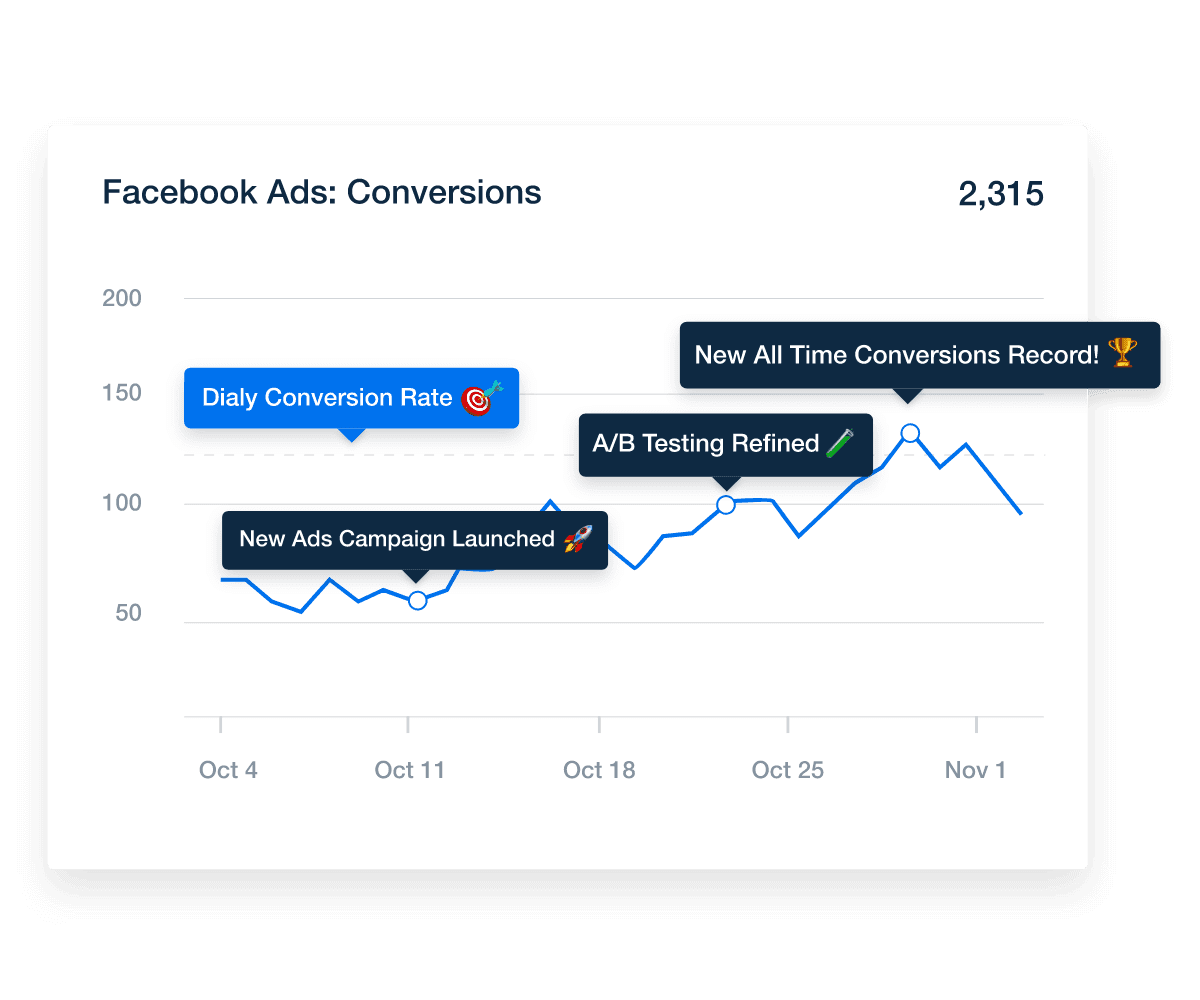
Actionable insights move your client from understanding their present state to envisioning future opportunities and strategies. In a way, they're the soul of your marketing report.
A great marketing report is straight to the point, highlighting the KPIs for the analysis timeframe and providing actionable insights.
Bryan Lozano, Vice President of Operations, Ad-Apt
Will the client's data suggest that a particular campaign will likely bring high returns next quarter? Share that. Or is a drop in organic traffic projected? That's equally important.
However, not all clients are the same. Customization is key. The best insights are tailored to each client's unique needs and goals.
What truly excites us at our digital agency is the power of customizable dashboards and report templates. They let us create reports that are as unique as each of our clients, tailored precisely to their individual needs, objectives, and goals. With these custom reports, we can zoom in on the key performance indicators (KPIs) and metrics that matter most to our clients, making our reporting experience incredibly valuable and directly relevant to their success.
Michelle van Blerck, Communications Manager, Digital Freak
Coherent Narratives Within Reports To Make the Data Relatable
Data, on its own, can be soulless and hard to digest. But frame that data within a coherent narrative and suddenly it springs to life. The story you tell with the numbers should relate directly to your client's objectives and pain points.
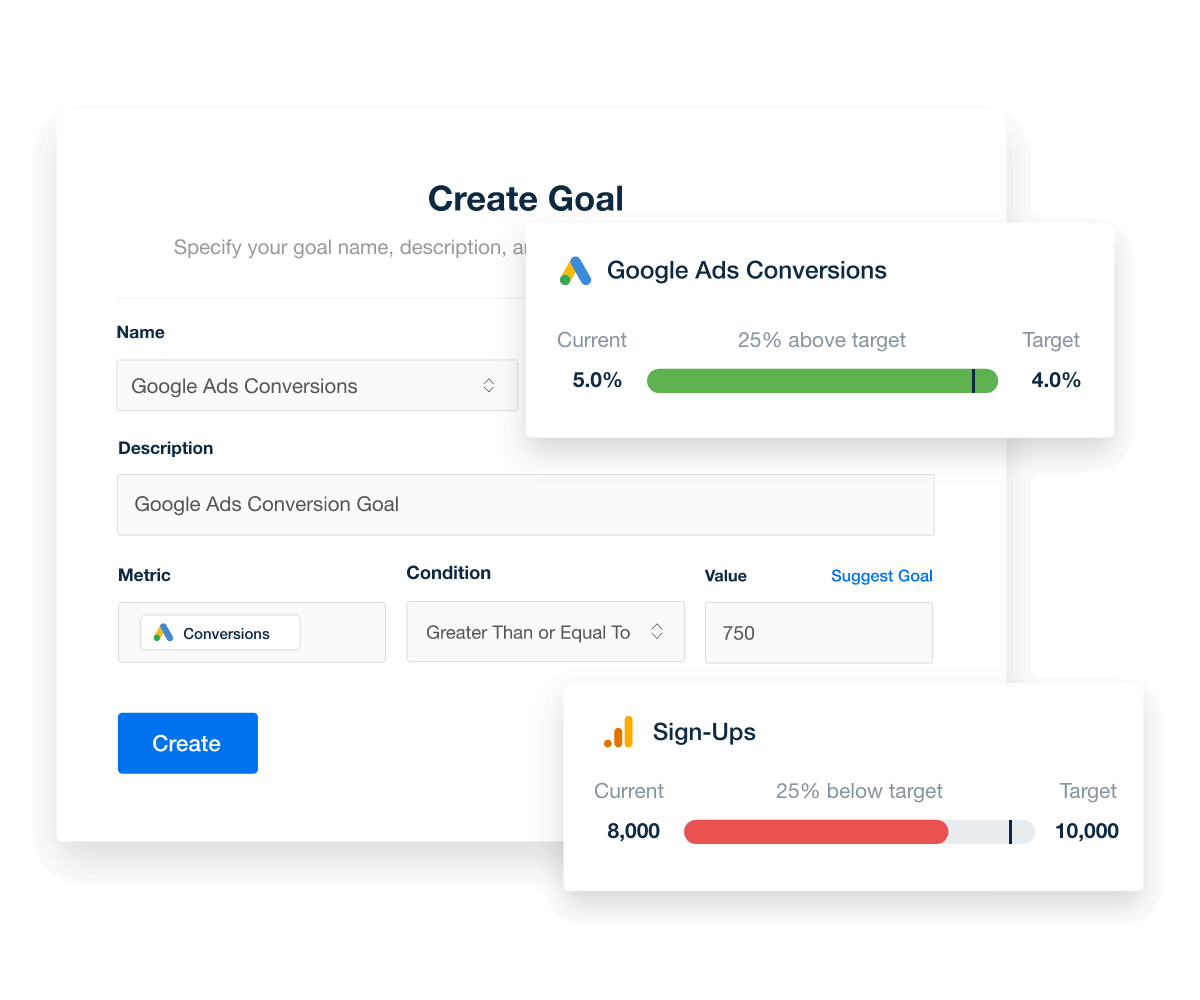
Here, context is king. How do these numbers tie into overall business goals? Are they good, bad, or just okay?
Our clients are very results-driven, so being able to connect our efforts to their business results is vital. We are able to pull together comprehensive reports from multiple sources that allow us to tell the story of how ads have impacted their business goals.
Tim Akers, Founder, Akers Digital
A marketing report transforms from good to great when it tells a compelling story that explains what the metrics mean and offers clear next steps. Instead of saying, "our SEO efforts have resulted in a 10% increase in organic traffic," explain what this means in the client's broader business goals. Was this the expected result? Is there room for improvement? What does this mean for future marketing efforts?
User Experience and Presentation Aesthetics
Let's face it, we've all seen reports that are a sea of numbers, pie charts, and bar graphs that induce more yawns than "aha!" moments.
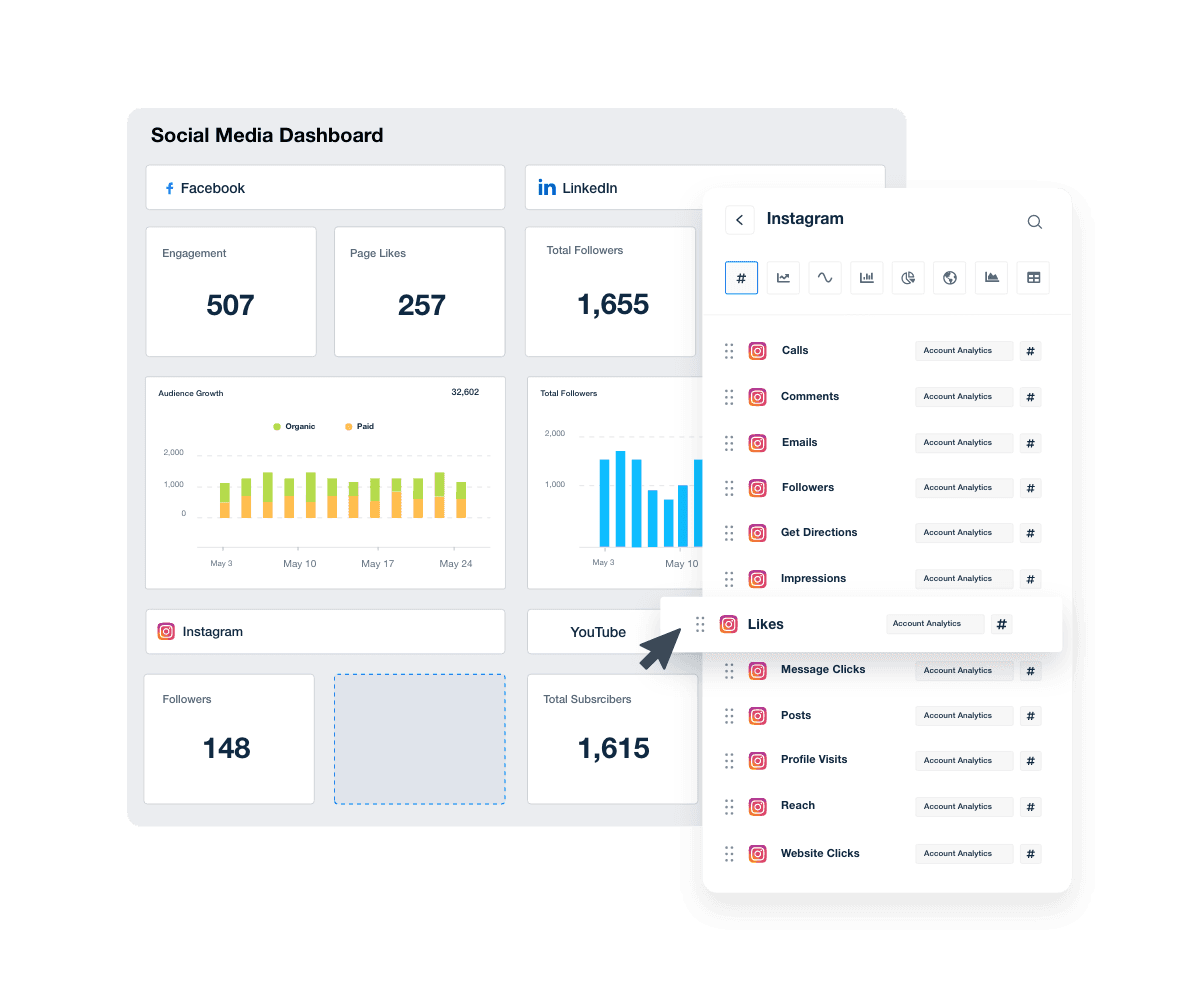
The design and layout of your report can make or break the user experience.
Our clients have responded positively to the reports generated through AgencyAnalytics. They appreciate the clarity, visual appeal, and easy-to-understand presentation of the data. The reports provide a comprehensive overview of key metrics, campaign performance, and actionable insights, enabling our clients to make informed decisions and gain a deeper understanding of their marketing efforts' impact.
Joseph LeBlanc, Marketing Specialist, Studio Eighty-Eight
Use a clean, intuitive design that logically guides the reader through the report. Visual elements like color coding or even well-placed icons can also help emphasize key points. After all, even the best content falls flat if it's not presented in an engaging manner.
Real-Time Access and Interactivity
Clients love to have control–or at least the feeling of it. Providing real-time access to reports through an interactive dashboard is impressive and extremely useful.
AgencyAnalytics supports our clients at their level, whether they want a deep dive or an overview, they get everything they need in a single interface. From the opening dashboard to deep dives within the specific data points, everything in AgencyAnalytics is frictionless.
Dan Delmain, Founder, :Delmain
This enables the client to dig deeper into areas of interest and makes the reporting process more transparent. Interactivity is a feature offered by several advanced reporting tools and is rapidly becoming the industry standard.
Developing Client Reporting Best Practices
Client reporting is more than just tossing numbers and charts into a pretty template. To really win over clients, it's time to level up your game and build some rock-solid best practices that deliver value month after month.
Set Clear Expectations From the Onset
A key part of any good client onboarding workflow is ensuring clients know exactly what they’ll get from your agency and a timeline for when they’ll get it. Client reporting is no different, and the frequency and format of your client reports should be clear from the onset of your working relationship.
Our clients understand (through setting expectations) that a monthly frequency is the default. Although each client is different, a higher frequency of data reduces the ability to deduce trends and evaluate effectiveness. It may also lead the client to making hasty decisions, which can throw off measuring evergreen campaigns.
Terrence Gordon, CEO, 214Interactive.com
Identify the Metrics & KPIs Your Clients Care About
In addition to setting clear expectations, another key part of the onboarding process is to make sure you understand what metrics your clients actually care about.
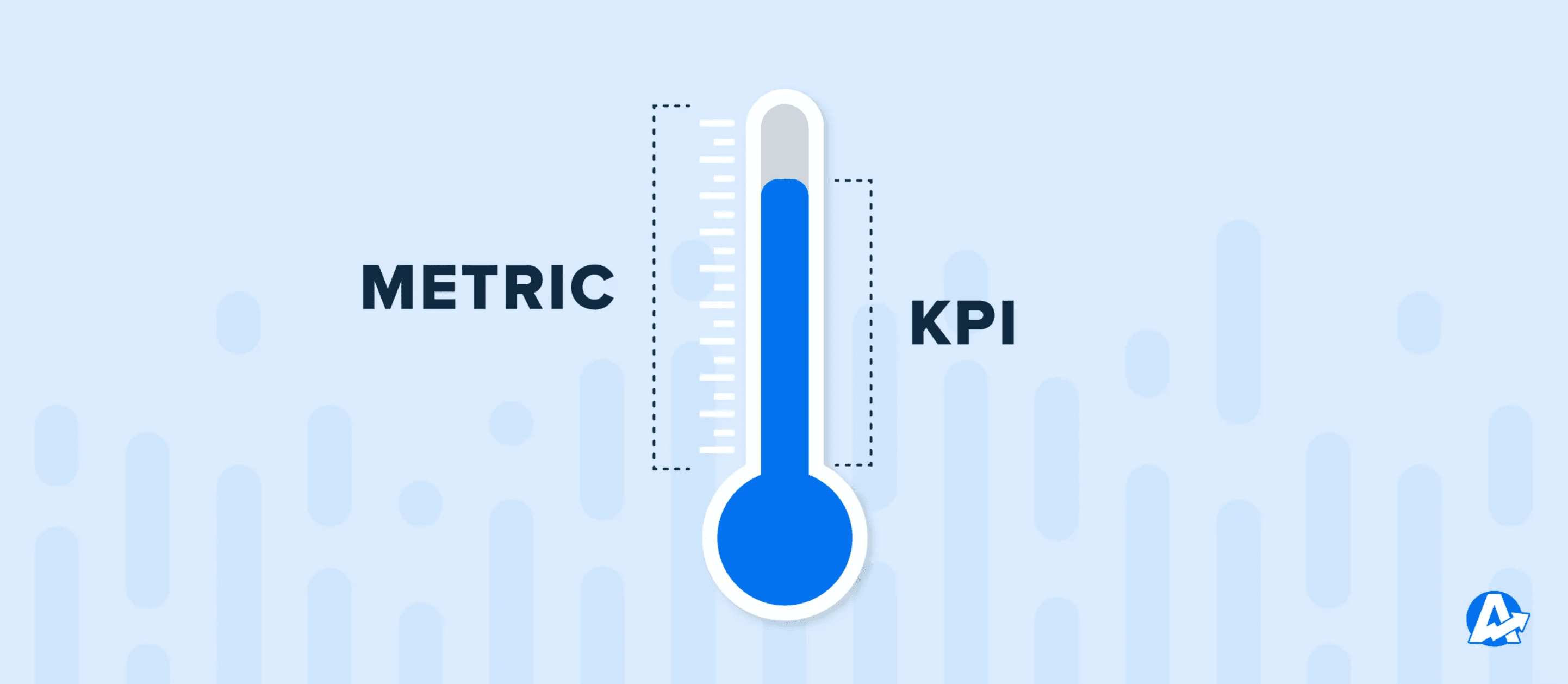
KPIs zero in on precise measurements that help gauge how well you're meeting specific goals. Metrics, meanwhile, are more like the nuts and bolts of data collection that happen as a part of day-to-day operations.
It may take a discussion or two to get to the bottom of which KPIs and metrics to track, as clients often say they care about a certain metric–for example, to grow their social media followers–but in reality, it’s the number of phone calls to their business they really care about.
Our clients love their customized reports on data based on what they are most interested in understanding for their specific business. We start with a template for our new clients, and during their onboarding, we ask what their top KPIs are. We make sure to include those on the first page for them. As we have our first few strategy meetings, we take a look at these reports and ask our clients about their reports, and make edits to the templates.
Christina Cypher, Director of Marketing, Click Control Marketing
Data Centralization & Automation
Gathering data from multiple platforms and channels is like herding cats. Save yourself the hassle by centralizing data through AgencyAnalytics. Automation is your friend.
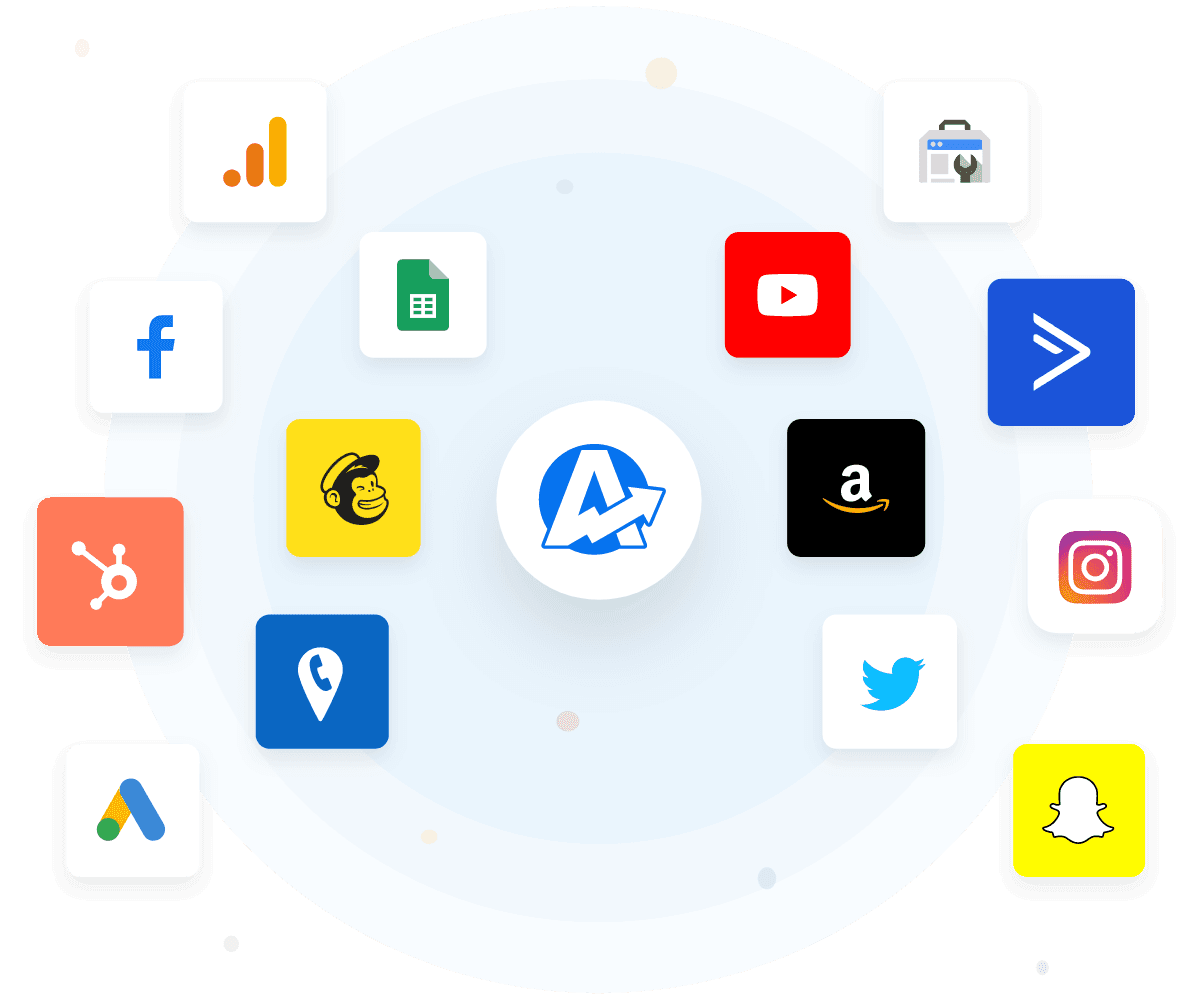
Automated integrations with over 80 marketing platforms eliminate the grunt work, freeing up valuable time to focus on the crucial aspects of client management and reporting. With fewer manual processes, you get accurate data and more time for strategic thinking.
Not to sound cliche, but “time is money.” When we look at the effectiveness of our team members, time management and focus are key components in measuring that success. AgencyAnalytics not only enables the team to have useful data at their fingertips, but also presents it in a palatable way for our clients to digest.
Jessica Weiss, Director of Marketing & Strategic Partnerships, One Firefly
Use Data Visualization To Simplify Your Reporting
The next crucial part of reporting is to make sure you use data visualization that makes the report as easy to understand as possible.
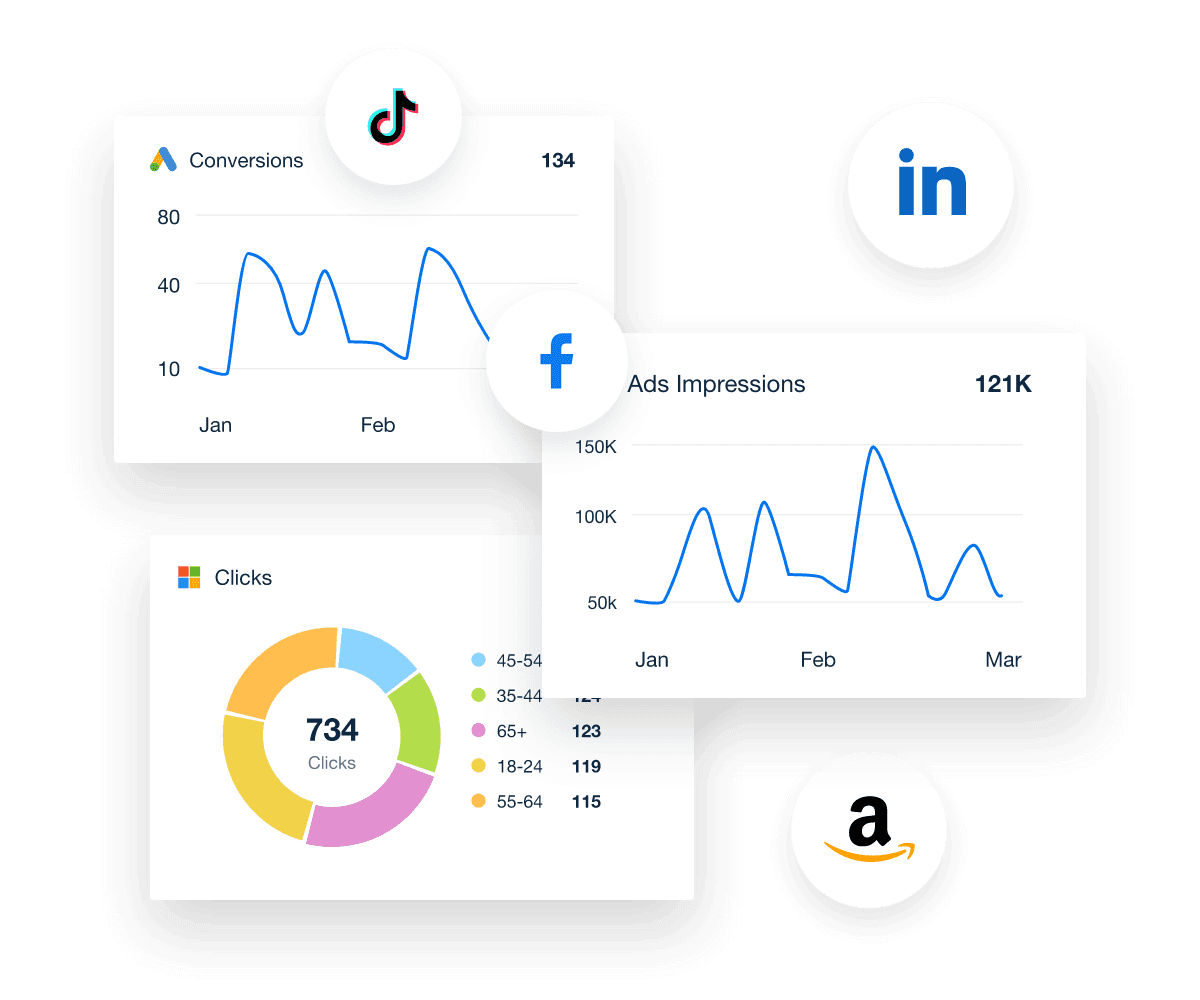
Nobody wants to analyze a spreadsheet full of raw data, so using tools that easily transform your data into intuitive insights goes a long way.
I know how much our clients want an easy-to-digest, visual format of just the most important information. Being able to create and send clear, beautiful, comprehensive reports quickly is such a huge value-add, and it takes so little effort on our part.
Lane Anderson, Founder & CEO, London Road Marketing
Leverage Customizable Report & Dashboard Templates
Using customizable templates isn't just about saving time; it's a strategic move that elevates your client reporting process from the get-go. Streamlined onboarding? Check. Consistent monthly reports without the headache of starting from zero? Absolutely.
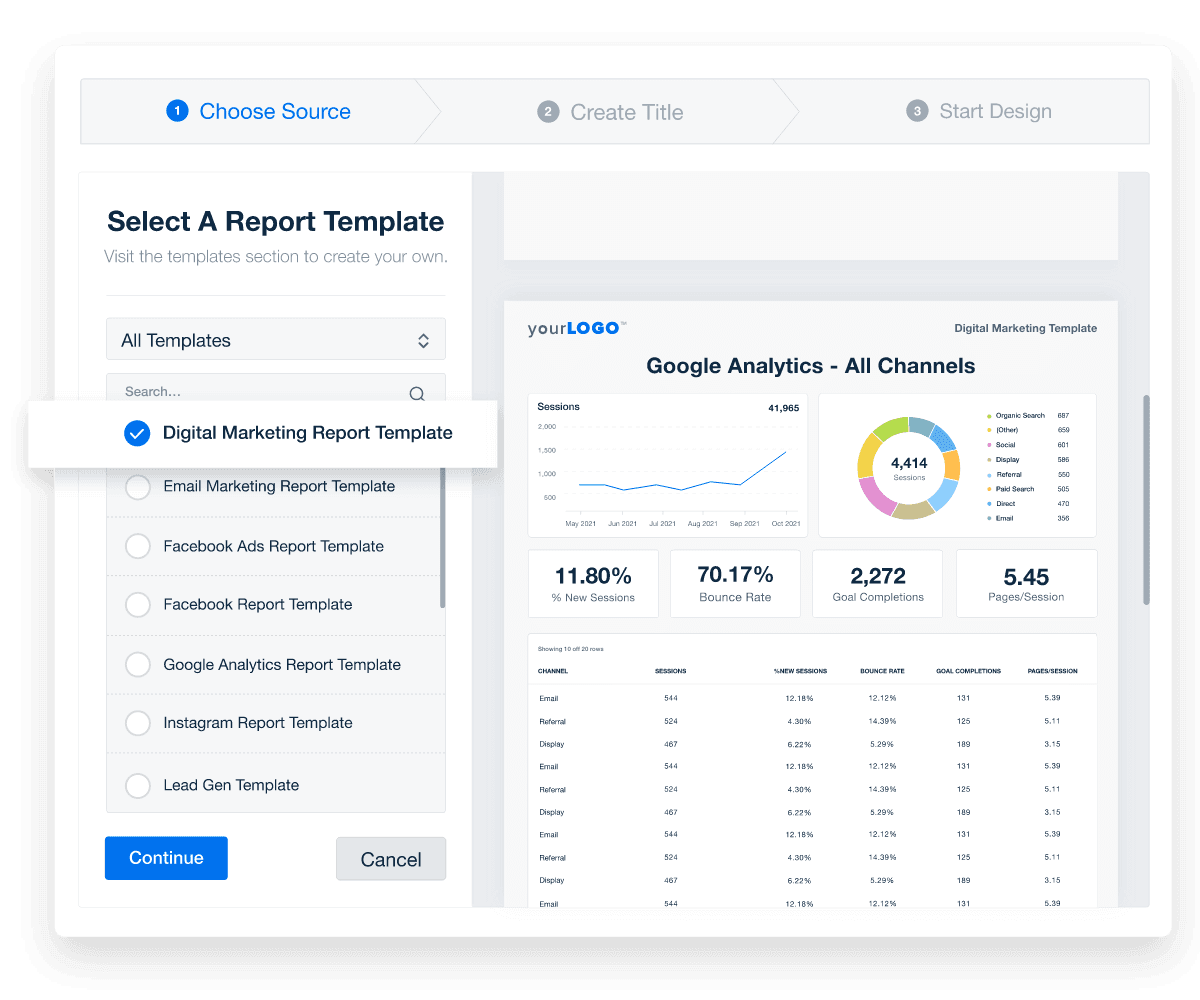
With these templates, you automatically insert critical metrics and visuals and then add client-specific comments. They enable you to annotate date-based charts and create goal widgets, making your reports more insightful. The bottom line: customizable templates remove the chaos, ensuring you spend less time on repetitive tasks and more time on delivering real value to your clients.
In addition to traditional reports, AgencyAnalytics also offers interactive dashboards that allow clients to view and analyze their data in real time. This has helped us provide more transparent and actionable insights to clients, enabling them to make data-driven decisions more effectively.
Daniel Dye President, Native Rank, Inc.
Leverage Automation for Report Creation
Speaking of elevating your client reporting process from the get-go, another great option is to apply automation from the outset.
Smart report creation tools make it fast and easy to click and create complete client reports that include the most relevant metrics for your client based on their specific connected tools. These reports are ready to use as-is, or you can take them to the next level. Add additional data insights, including custom metrics, annotations, and goals to tell a transparent story of your client's marketing performance.
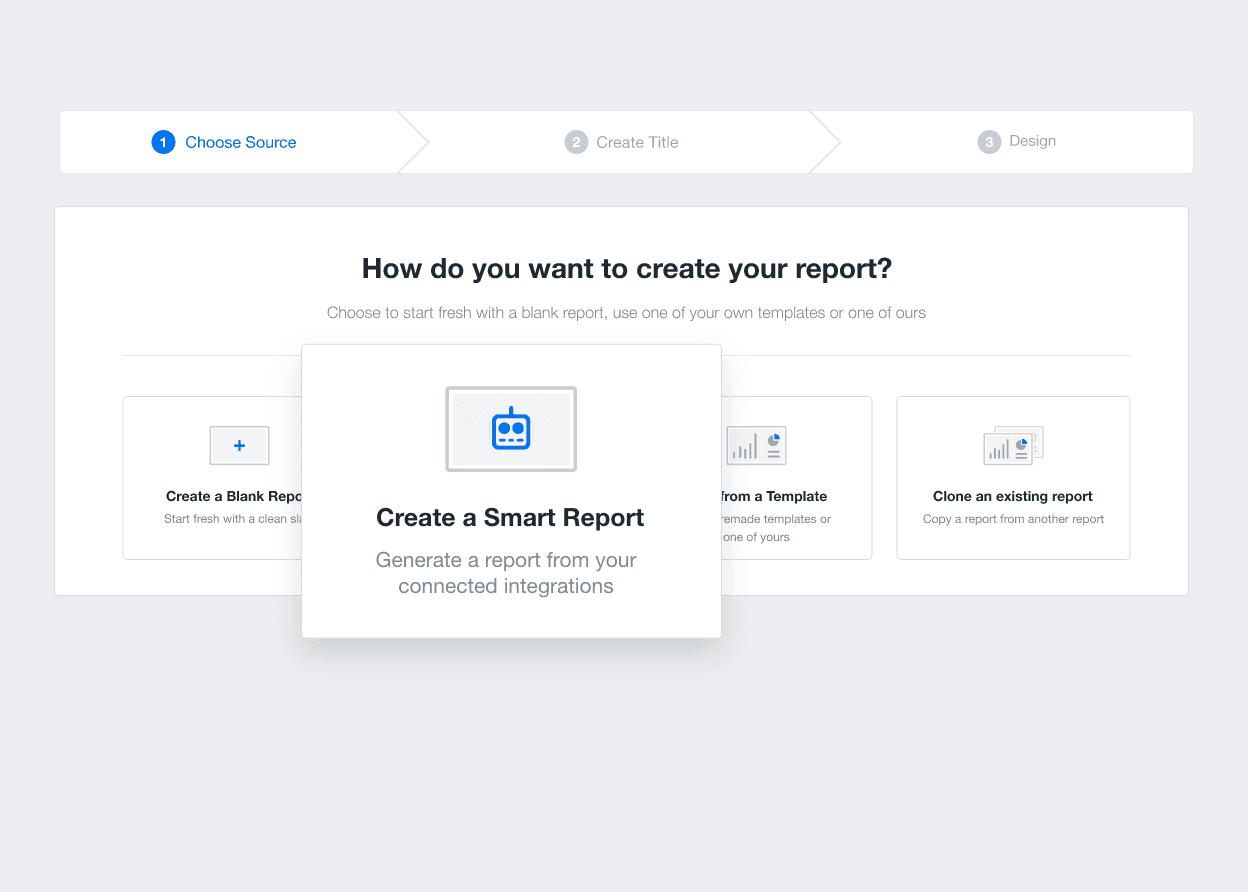
AgencyAnalytics' Smart Reports option, for example, requires just a click during your report creation process.
Tailor Each Report to Your Audience
In the same vein as customizing each report, another client reporting best practice is to tailor your reports to a specific audience. For example, if you’re dealing with clients that have no marketing knowledge, including overly technical terms such as Trust Flow and Citation Flow in your SEO reports wouldn't make much sense.
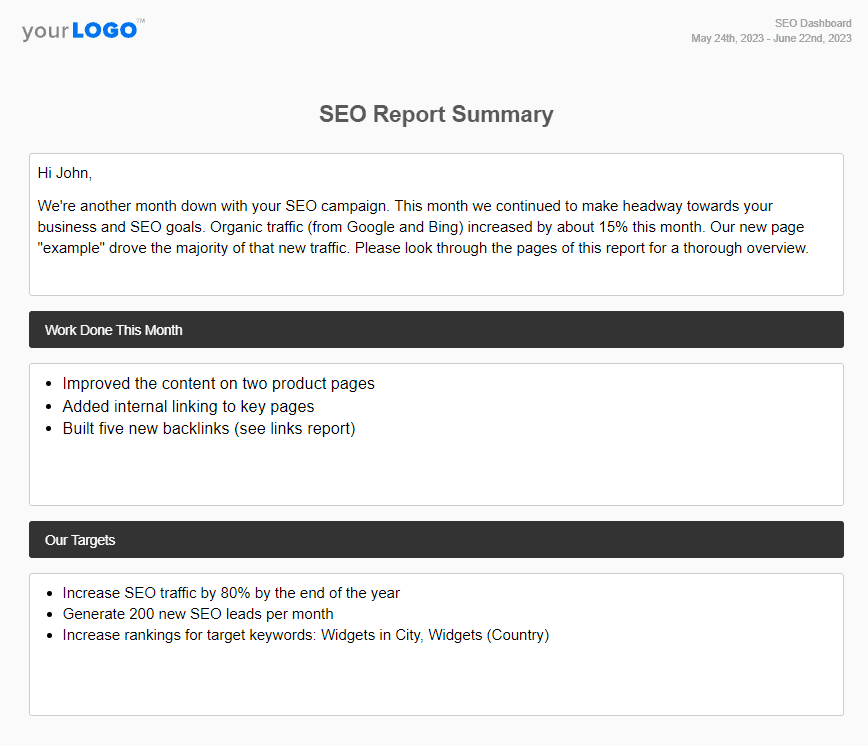
Also, consider the internal dynamics of larger organizations when customizing your reports. A C-Suite executive doesn't need–or probably want–to wade through the nitty-gritty details. They're looking for high-level takeaways and essential metrics that show whether the company's objectives are being met. A dashboard with important KPIs and an executive summary usually does the trick for this crowd.
On the other hand, a marketing manager will be interested in the specifics because it's their job to understand and act on them. For these professionals, a more tactical report detailing performance metrics like organic traffic, monthly trends, and granular data is not just helpful but necessary.
Templatize to your heart's content. Pull in data from every source and organize it in easy-to-read dashboards that help your team communicate value. Being able to have an executive overview also makes life easier for the leadership team to get a quick glance of customer health across the entire organization.
Rocky Pedden, President, RevenueZen
Focus On Actionable Insights
Many clients appreciate reports that get straight to the point. While marketing experts might salivate over granular details, clients want clarity. Prioritize high-level insights that align with the client's goals.

The aim is to provide a snapshot that's easy to digest yet rich in actionable information.
Focus on creating reports that are clear, concise, and actionable.. This means using data visualization tools like charts, graphs, and tables to help clients quickly and easily understand the performance of their campaigns so clients can understand what the data means and how it relates to their business goals.
Daniel Dye, President, Native Rank, Inc.
Provide Consistent Client Communication
Automated monthly reports are great, but many clients want a full conversation, not just a monologue. That's where the integrated messaging features of tools like AgencyAnalytics come in.
We are the agency that is following up with you, we are there when you need us. We get results, but we are also just as focused on making sure that our clients feel like they are seen, heard, and respected. Our clients are our partners, and there's no such thing as too much communication.
Rachel Jackson, Lead SEO, Wit Digital
These platforms don't just deliver a PDF and peace out; they facilitate real conversations around the data. Discuss important KPIs, respond to questions, and collaboratively decide on the next steps.
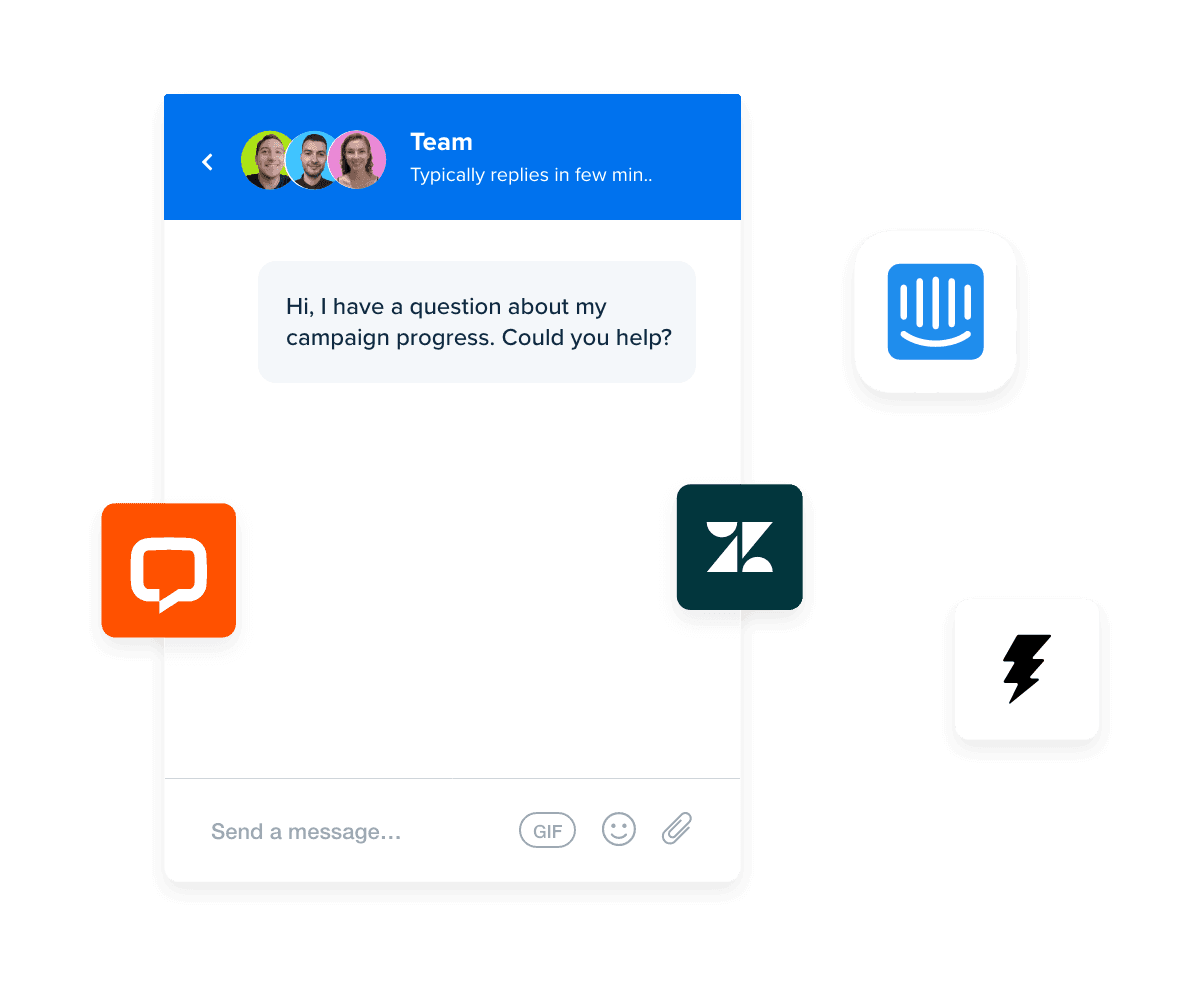
Even after you’ve determined the metrics and KPIs your clients care about most, if you’re not communicating these on a consistent basis to clients, they’ll be left wondering what you’re actually doing and what they’re paying you for.
Communicate Changes in Terms of How They Benefit Clients
Another key communication lesson in client reporting is to frame your proposed changes in the context of how they'll benefit the client. While these changes may seem obvious to you, your client may not get the connection between actions and outcomes as quickly or easily.
There is a lot of data available, but clients are busy, juggling many things, and often don't understand the jargon/technicals of the digital marketing world. Make reports clear and to the point so that they can easily see how you're unquestionably helping their bottom line.
Brendan Chard, Owner, The Modern Firm, LLC
For example, if you’re proposing a change that will increase site speed, make sure to frame the change in the context of how it will ultimately benefit the company's overall goals.
Be Transparent With Your Progress
Finally, client reporting is all about building transparency with your clients on exactly what you’re working on, the progress you've seen so far, and your targets going forward. AgencyAnalytics has made this process of building transparency with clients easier with the Goals features, which allow you to showcase your progress towards a specific objective in a simple, intuitive visual.
Designed to help you convey the success of your campaign at a glance, Goals are applied to any marketing metric or across multiple campaigns to show clients how they're progressing towards their desired outcomes. Goals break down your monthly performance targets into everyday action items to keep your team on track.
Assign Data Views & Governance
Not every client wants to know the in-depth details of every campaign or ad. Customizing data views based on what each client finds relevant can go a long way.
Client permissions help us ensure that they're only seeing what they truly care about and what will help them understand their progress.
Amanda Caven, Digital Marketing Strategist, Vivid Image
Tailor user access so that clients see what matters most to them. It's not about hiding information, but spotlighting what’s most relevant to their goals.
Automate Reporting Workflows
Many clients, many reports, so little time. Automating your reporting workflow brings consistency and efficiency. Set a schedule, automate the data fetching, and make your reports ready to dazzle every month like clockwork.
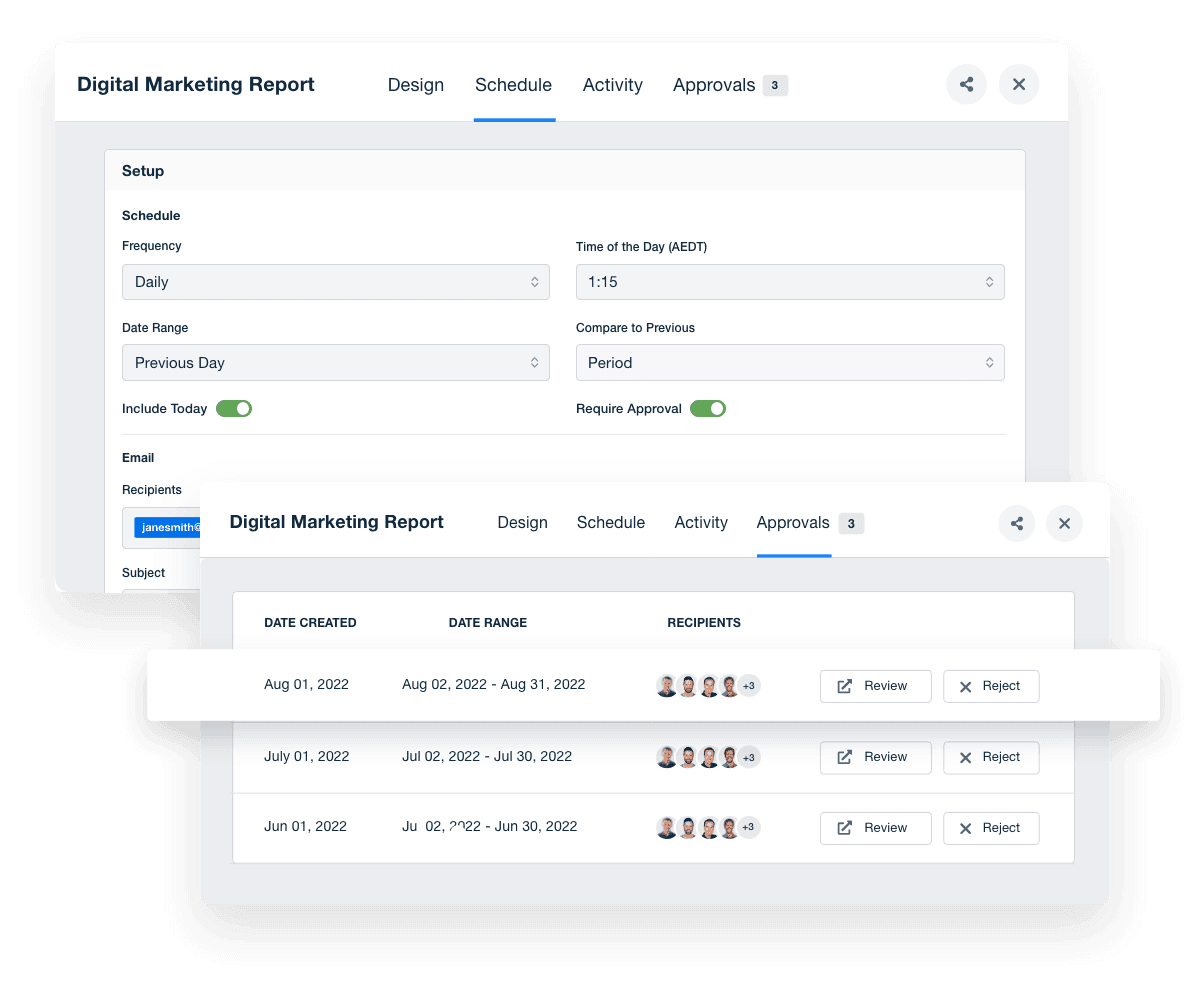
This is where the "set it and forget it" principle shines—except you'll never forget because your reporting tool has your back.
One of the best things we've done with the saved time is in how we deliver reports to clients. We now record a video walk-through for each report so that the client can see their account manager and get a personal recap of what they think about the numbers they're presenting. This allows clients to view the report, with the context we think is important, all on their own schedule.
Brendan Chard, Owner, The Modern Firm, LLC
Make Reports Your Own With White Label Branding
White label branding isn't just about slapping your logo on a report and calling it a day. It's about delivering the data in a way that truly reflects your agency's style and ethos.

While AgencyAnalytics gives you the option to customize the look and feel of your reports, it's up to you to use this feature in a way that genuinely impresses your clients.
Clients who see a report that carries your distinct brand identity are more likely to see you as the authority. Remember, your branding isn't just about you; it's a crucial part of the client's experience. Through white label branding, you make the report feel less like a templated set of stats and more like an integrated part of your ongoing digital marketing relationship. See our client report template for example.
The customization capabilities of AgencyAnalytics allow us to create reports that accurately reflect our agency's brand and messaging, while the platform's integrations make it easy to pull data from multiple sources.
Adam Binder, Founder + CEO, Creative Click Media

How :Delmain Shifted From Good to Amazing Reports Using AgencyAnalytics
:Delmain is a Portland, Oregon-based digital marketing and web design agency that specializes in serving the dental industry. Founded in 2019 by Dan Delmain, the agency has expanded from a solo operation to a team of 20 digital marketing experts, catering to over 100 dental clients. The secret sauce to their growth? Stellar client retention fueled by personalized service and results.
Problem: Reporting Challenges
Despite their growth and focus on customer satisfaction, :Delmain hit a snag when it came to client reporting. Their original platform was cumbersome, the data was confusing, and–quite frankly–a bit of an eyesore. For a clientele as detail-oriented as dentists, this wasn't going to cut it. After shopping around and trying out several platforms, they zeroed in on AgencyAnalytics due to its stellar reviews, pricing, and user interface.
Solution: Overhauling Their Client Reporting Process
:Delmain switched gears in 2020 and adopted AgencyAnalytics. The move was like going from a bicycle to a rocketship. They reduced their report preparation time from a soul-sucking 90 minutes per client each month to a breezy 30 minutes. This opened up space for meaningful interactions with clients and more strategic work.
Outcome: Improved Client Relationships and Agency Growth
The switch to AgencyAnalytics wasn't just about efficiency; it was a game-changer in client satisfaction. The platform’s intuitive interface and customized data views meant clients got exactly what they needed, whenever they wanted.
Lessons: Takeaways for Other Agencies
The advice from :Delmain is clear and worth its weight in gold: when it comes to reporting, less is more. Stick to what matters most and skip the rest. No need to get stuck in the data weeds.
By focusing on high-level, relevant information, :Delmain believes agencies can cultivate healthier, happier client relationships. And happy clients stick around, which is good news for everyone involved.
Tips and Tricks for Continued Excellence
Exceptional client reports aren't a one-off event; they're a journey, and an ongoing dialog between your agency and your clients. Think of it as the icing on the cake of all your hard marketing work.
But like any great recipe, you'll need to keep tweaking it to hit that sweet spot. From leveraging client feedback to keeping the content laser-focused on client-specific goals, there are several ways to maintain excellence in your client reports.
Leverage Client Feedback
Picture this: your client receives the latest marketing report, and their eyes light up. They're thrilled. You could pat yourself on the back and call it a day, or you could take this moment to dig deeper.
Ask for feedback. What specifically did they find most useful? Were there any gaps? Using client feedback helps align your marketing reports with what the client wants to know. Not only does it help you understand your clients’ priorities, but also it presents an opportunity to educate your clients about important metrics they may not be familiar with. Remember, the best client report is a two-way street.
Getting feedback on your team, processes, results, etc. can provide insightful actions about how you can do better and delight customers even more. Plus, if you get some great, positive feedback this can also be an opportunity to request a testimonial or even a case study.
Nathan Reiche, CEO & Founder, Content Chemistry
Keep It Relevant
Sure, website visits have spiked, and your latest digital marketing campaign is the talk of the town. But what does your client actually want to know? Tailoring the report to client-specific objectives helps you cut through the noise and deliver valuable insights. Maybe your client is more interested in long-term ROI over short-term wins. Or perhaps they're laser-focused on organic traffic.
Whatever the case, a bespoke report adds more value and shows that you're truly invested in your client's unique goals.
KPIs are just an extension of us living out our core values. KPIs keep us accountable. KPIs provide the client transparency into what work we deliver, and–most importantly–KPIs demonstrate that we are on track and achieving mutually agreed upon goals. This is our agency's true north "results for clients."
David Krauter, SEO Strategist, Websites That Sell
Focus on the Long-Term Impact
Making your reports excellent isn't just about the here and now; it's about laying the groundwork for a long-standing relationship. Consistency in delivering actionable insights sets the tone for trust and collaboration moving forward. Use your reporting tool to create a narrative that aligns with your client's long-term objectives.
Over time, your client will come to see these reports as an essential component of their digital marketing strategy, not just a monthly check-in. By demonstrating the impact of their investment through carefully curated data, you're not just a marketing agency; you become a strategic partner. And in this business, that’s what everyone's after.
AgencyAnalytics has been a game changer for our company. We were able to connect all of the different services that we offered into one dashboard, which gave us complete oversight and eventually led us towards fewer contractors or dedicated personnel as well! The modular nature also means faster insights-we're getting them sooner rather than later. As a whole, it saved us time, allowed us to grow, and helped move our team away from constant reporting mode to account executive and relationship-building mode.
Ruben Roel, President & Founder, Investigator Marketing
See how 7,000+ marketing agencies help clients win
Free 14-day trial. No credit card required.
